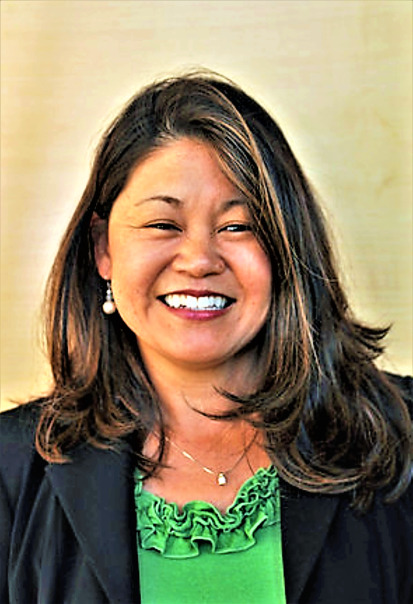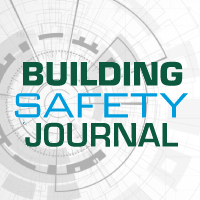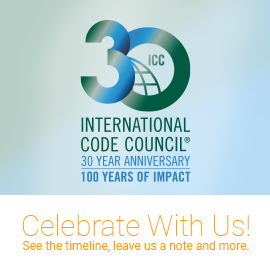
Michelle Kam-Biron: Supporting the education and certification of existing and future code officials

![]() Whether you are new to the construction profession, an experienced tradesperson or an accomplished code professional looking to enhance your knowledge, advance your career or earn certification, you need a variety of education and certification options to help you reach your professional goals. Dedicated to strengthening the credibility of the International Code Council’s certification and education programs, the Professional Development Council (PDC) advises the Board of Directors on coordinated career path resources for Code Council members. The Professional Development Council is comprised of the Education Committee — that provides strategic direction and facilitates the development and delivery of comprehensive code-related courses to help code officials, inspectors and design professionals elevate their qualifications, advance and grow in their profession — and the Certification Committee, which promotes the professionalism of individuals in the built environment by providing professional examinations and certification services worldwide.
Whether you are new to the construction profession, an experienced tradesperson or an accomplished code professional looking to enhance your knowledge, advance your career or earn certification, you need a variety of education and certification options to help you reach your professional goals. Dedicated to strengthening the credibility of the International Code Council’s certification and education programs, the Professional Development Council (PDC) advises the Board of Directors on coordinated career path resources for Code Council members. The Professional Development Council is comprised of the Education Committee — that provides strategic direction and facilitates the development and delivery of comprehensive code-related courses to help code officials, inspectors and design professionals elevate their qualifications, advance and grow in their profession — and the Certification Committee, which promotes the professionalism of individuals in the built environment by providing professional examinations and certification services worldwide.
It takes the time and expertise of many individuals working through the numerous Code Council committees to shape it into the world-class membership association that exists today. Volunteers, one of the most important assets of the Code Council, play a key role in the day-to-day work of the Professional Development Council and are integral to helping develop the certification and education avenues that help building safety professionals to be effective in U.S. and global communities.
In this exclusive feature for the Building Safety Journal, we asked Michelle Kam-Biron to share her experience serving on the Code Council’s Professional Development Council, her professional career, and any insights or advice she has concerning the industry.
Michelle Kam-Biron
Mass Timber Specialist
Structurlam Mass Timber Corporation
Thousand Oaks, California, United States
International Code Council member for 11-plus years
How long have you been in the industry?
Twenty-five-plus years.
What was the path to your career — how and why did you pursue a profession in building safety?
Since high school, I was interested in architecture because I had an interest in art and loved math and science. I was accepted to California Polytechnic State University–San Luis Obispo (Cal Poly) for its architecture program but then changed majors to architectural engineering during my second year. I switched to architectural (structural) engineering because it allowed me to use the logical left side of my brain to come up with creative structural solutions to keep people safe when they’re in buildings. After graduating with a bachelor’s degree in architectural engineering, I worked in the structural engineering consulting industry in California and obtained my EIT certificate and P.E. and S.E. licenses. After working for different firms to advance my career and gain different types of experiences, I started working for Harris Engineering in 2003 as an executive vice president, which provided consulting structural engineering services as well as contract plan review for the Division of the State Architect. This was my first introduction to structural plan review and I gained a better appreciation for plan checking. Structural engineers and code officials have a common goal of providing safe buildings for people to live, work and play in and we do our jobs so well that the importance of these roles in the industry is often overlooked until something fails.
In 2008, I joined the wood industry and helped launched the WoodWorks program, which included educating and assisting designers and code officials with wood construction that included mass timber. As senior technical director, I lead the mid-rise construction initiative and was a national leader in projects influenced. With an interest to concentrate on wood education, I joined the American Wood Council (AWC) in 2012 as director of education. AWC publishes the engineering standards for wood design and construction and provides technical expertise, education and support on building codes, standards and wood engineering design issues. While at AWC, I advanced to vice president of education and established AWC as the industry leader on wood construction building codes and standards education and led the education team to development and implementation of a professional continuing education program that included increasing attendance (over 20,000) by over 650 percent in eight years with many repeat customers and over 90 percent approval rating, expanded AWC programs to more than 150 courses, expanded AWC eCourses to approximately 200 courses, and established accreditation for AWC programs and partnerships with ICC, AIA, NCSEA and ASCE. One of the projects while working at AWC that I am most proud of is the development and implementation of the Timber-Strong Design-Build University student competition, which was initially launched in partnership with Simpson Strong-Tie and the Binational Softwood Lumber Council; later APA-The Engineered Wood Product Association joined. Several university teams in the Pacific Southwest competed to design and build a wood structure and the response was so overwhelmingly positive that it was repeated and expanded to other regions.
Since joining WoodWorks in 2008, I’ve been involved from the beginning in promoting and educating designers, contractors and code officials about a new type of construction using mass timber and continued that effort with AWC. With my unique background in structural engineering combined with my experience in building codes and standards related to mass timber, I joined Structurlam Mass Timber Corporation in February of 2021 year to learn more about the construction side of mass timber construction and to further assist designers, developers and contractors about this new type of construction.
In addition to my employment experience, I am passionate about giving back to my industry, my alma mater and to future generations through my long history of volunteerism starting with the Structural Engineers Association of Southern California (SEAOSC), which has been in existence since 1929. I have chaired and participated on many committees as well as served on the board, which culminated in me being the first female president in 2015. Currently, I am chair of the SEAOSC Women in Structural Engineering Committee, which was formed when I was president. I am a recipient of several awards from SEAOSC, including the Engineer of the Year Award and the S.B. Barnes Research Award. I also volunteer for the American Society of Civil Engineering Structural Engineering Institute (ASCE/SEI) on the Wood Education Committee of which I am past-chair and on the Sustainable Committee as well as the National Council of Structural Engineers Association’s Basic Education Committee and am an alternate delegate as well as for the ICC Professional Development Council Education Committee.
Additional volunteerism is with my alma mater, Cal Poly, SLO where I have served on the Architectural Engineering Department Industry Advisory Board and am currently serving on the School of Architecture and Environmental Design Dean’s Council.
What major changes have you seen?
Where to begin? Over the many years of my career, I’ve seen a lot of changes such as changes to design and detailing criteria for designing for wind and seismic as a result of natural disasters such as earthquakes, tornadoes and hurricanes. There were changes to all the major types of construction, including steel braced and moment frames, concrete tilt-up panel design and anchorage into diaphragms, ductile concrete moment frames, wood shear wall detailing and roof anchorage, masonry shear walls, and the inclusion of structural observation and special inspection. Not to mention the huge advancements that have been made in the software that we use to analyze structures, graphically create construction documents as well as plan check software enabling it to all be done electronically. The way projects are delivered has gone from a design-bid-build process to also include a design-build process that speeds up the process of delivery and includes a more collaborative approach with budget considerations throughout the whole process. As well as the means by which we provide education. I’ve also seen more collaboration between designers and code officials on projects that may require a less prescriptive design approach. The designers will meet with the code officials in the design development phase of the project rather than waiting until submitting the project for plan review.
Over the past 10-plus years, since buildings contribute 39 percent of total global CO2 emissions, the building industry has made big advancements in sustainability and in lowering the carbon footprint of buildings. The industry has concentrated most of its efforts on building operations and now is turning to building materials and construction. Since wood construction is the only major building material that is renewable and is 49 percent carbon — effectively a means to store carbon long term in addition to innovations with mass timber construction — the building industry has to expand the use of wood construction. And although the 2015 International Building Code (IBC) included mass timber elements, it wasn’t until the 2021 IBC that mass timber construction was defined and allowed wood construction up to 18 stories rather than six depending on the occupancy.
Lastly, this past year with the pandemic was very challenging to our industry but the industry pivoted and excelled rather than slowed down. We quickly adapted to the challenges that we were faced with and conducted business as usual, if not more. We turned to technology to allow us to do business more efficiently and effectively via Zoom or Microsoft teams. We’ve seen an increase in construction rather than what some predicted would be a decrease, and the prediction is causing issues now with high demand in building products but low supply because some wrongly predicted a slow down in construction.
What excites you about the future of your industry?
There are several things that excite me about the future, some of which are the younger generation entering the industry; efforts to elevate the discussion on diversity and inclusion, especially related to women; collaboration amongst the various organizations; and the industry making strides to mitigate climate change. I have had the opportunity to interact with college students and young professionals on various levels — either through providing educational training, interacting via the Timber-Strong Design-Build Competition, or just one-on-one advising students about their projects. They are smart, creative and driven as well as being environmentally conscientious about the built environment. It’s also exciting to see the industry recognize and make efforts to alleviate the issues related to discrimination based on gender, sexual orientation, race, age, etc. Additionally, a more diverse workplace can foster creativity, innovation and a better understanding of the community. Many of the organizations in the industry such as ICC, AIA, SEAOSC, NAWIC, WiOPS, CALBO, etc., are reaching out and working together to collaborate on projects. One great example is the SEAOSC Safer Cities, which is a collaboration with CALBO to bring awareness of safe and resilient communities. It is through collaboration rather than working in silos that we can elevate the building industry and the building industry professional. Since the building sector is the largest contributor to global greenhouse gases, the industry has been making great strides to reduce our carbon footprint and it’s exciting to see that we are now shifting to look at embodied energy, which is where wood construction can help contribute substantially to reducing the embodied energy of buildings.
What do you see as most surprising about the work that you do?
I’ve been educating others about using wood and mass timber construction for more than 10 years and it is surprising to learn how many people are not familiar with mass timber.
What led you to apply to become a member of the Professional Development Council?
I applied while I was senior director of education for the American Wood Council. I had participated on the committee that helped launch the program and have had a great working relationship with ICC so it seemed like a great fit to participate in the PDC to continue the collaboration. Also, ICC has always been THE organization to support and provide professional and topical training for its building code professional members.
What do you see as your role on the Professional Development Council/Education Committee/Certification Committee?
Given my many years of experience as a structural engineer and educator in the industry as well as my network through NCSEA/SEAOC/SEAOSC and ASCE/SEI, I contribute to the committee by advising on many topics such as relevant topics and speakers, outreach, implementation, accreditation, and collaboration with other building industry associations.
Being a part of the Professional Development Council provides you with an overarching view of the education and certification offerings provided by the Code Council. With that knowledge, what would you recommend to individuals who are entering the industry?
For all individuals, I would recommend them to become familiar with the plethora of ICC educational resources. If there isn’t training that meets your needs, contact ICC and they will help you find the proper training. I would also suggest that they get involved with their local ICC chapter as a way to increase their knowledge about the industry and network with other like-minded members. Also, if they just graduated from college or earned a certification, the education never stops after receiving a degree or earning a certificate. Throughout one’s life, we are always learning, whether it be because of the various codes and standards changes, but the industry is always changing with new technology and a better understanding of the built environment.
What has been your most satisfying accomplishment with your work on the Professional Development Council?
I enjoy being able to contribute back to my industry and working with other members of the committee who are dedicated enough to want to give back and improve on the training for others in the industry.
And finally, this last question is a fun one we ask for our Building Safety Journal readers. If you could have any superhero power, what power would you have and why?
I’d like to have the power of a Master Jedi has because Jedi are wise and powerful with the Force and work for the greater good against evil. I’m a Star Wars nerd at heart and I like to think that I’m working on behalf of the underdog.
Thank you for your work on the Professional Development Council. Your dedication to strengthening the Code Council’s certification and education programs is impressive and we appreciate your commitment to upholding the high standards of professionalism in the building safety community.
About the Professional Development Council
The Professional Development Council recommends initiatives identified by the Education Committee and the Certification Committee to better serve the needs of the membership, coordinates the goals and objectives of the Education Committee and the Certification Committee, and identifies certification and education issues arising from Code Council policies that will improve or enhance the position of the association.
The Education Committee is committed to providing strategic direction and facilitating the development and delivery of the most comprehensive portfolio of code-related courses available to meet the needs of code officials, inspectors and design professionals to elevate their qualifications as well as help them advance and grow in their profession. The Education Committee is responsible for advising Code Council staff and the Board of Directors on matters related to the ICC Education Program and the Learning Center, reviewing and selecting the topics and presenters for the annual business meeting, providing a review and recommendation for the Educator of the Year award, serving as a resource for review of potential learning initiatives and curriculums within the Learning Center, providing new topics and concepts for learning initiatives within the Learning Center, promoting and encouraging members to take advantage of the training offered by the Learning Center, and relaying information provided by the membership to staff in order to improve programs.
“The insight and guidance the Education Committee provides the Code Council is beyond measure,” said Tracy Lendi, vice president of Training & Education for the International Code Council. “While not only offering a myriad of educational ideas, the committee offers a safe place to discuss and debate these ideas so we can provide comprehensive and effective training solutions to the building industry. Being a part of the Educational Committee is truly my honor and privilege.”
The Certification Committee is dedicated to promoting the professionalism of individuals in the built environment by providing professional examinations and certification services worldwide. It has sole authority over the rules and procedures of the ICC Certification Program, including such topics as the renewals process, examination security policies and disciplinary action. The Certification Committee is responsible for advising Code Council staff and the Board of Directors on all matters related to the Certification Program, maintaining the International Registry of current ICC Certified professionals, supporting international recognition of ICC Certifications, direction and oversight of the Examination Development Committees, and serving as a disciplinary board.
“It is a privilege to work with the members of the Certification Committee,” said Autumn Saylor, director of the International Code Council’s Assessment Center. “The Code Council appreciates the committee’s commitment to upholding the high standards of professionalism in the building safety community.”
From an array of training options for every individual to the ICC Assessment Center, the Career Center, the signature Safety 2.0 initiative, or its Scholarship Program, the Code Council is committed to supporting the education and certification of existing and future code officials.





